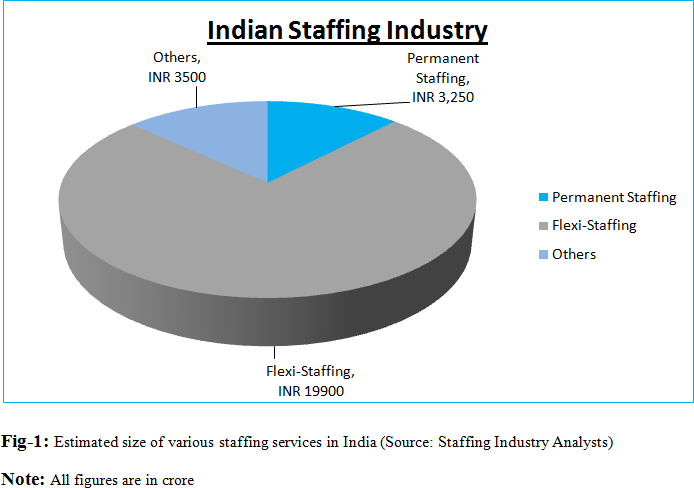How does the future look like in IT Outsourcing Industry

Outsourcing has always been forced by –only for it to rise to new levels of scale and innovation. with the development of the user of cloud computing, companies will very unlikely to prefer having their own set of IT assets and infrastructure. A simple “Sublet and use” model is something which helps them to be free for maintaining & handling the problems of their own related IT infrastructure and the very same time, it is available at a cost-effective price too. In fact, that the revenue for a majority of outsourcing service providers came from application development, application maintenance, and implementation, and the fact that there was no software to install, maintain or develop in the cloud computing model – the cloud computing was seen as a threat to the outsourcing model. Today, outsourcing service providers have been converted the cloud threat to an opportunity by offering services to organizations who want to build their own private clouds or those who want to migrate from traditional on-premise solutions to the cloud computing. In summary, outsourcing will remain the same and will continue to remain with an imposing force – through the scale and the types of services to be offered in the future it may differ extra-ordinary.
Do you want to see them, how would be the future of outsourcing really look like? The speed with which we see a shift in trends and technologies in the IT industry, it is really tough to take a viewpoint and comment on the IT sector where is IT Outsourcing heading to? Still few macro trends are there that we can see on the horizon, and which can form the core components of outsourcing business models in the near upcoming trends. In below there are some of the few trends, which we feel would play a very important role in deciding the future of IT outsourcing industry.
Trend1: A technology changes to “Everything as a Service” :

Started with “Software-as-a-service” to”Infrastructure-as-a-service” to “Platform-as-a-service”, thanks to the cloud, we have reached a state where the model has been changed to “Everything-as-a-service”. Today, most of the services are offering in a virtual way. So hence Customers, will not worry where the service is coming from. The word ‘offshore outsourcing’ may lose its relevance and a more appropriate word such as ‘virtual sourcing’ may eventually take its place. Services are consumed by a self-service model and will require minimum intervention from the service provider. While today we already have Storage-as-a-service, Communications-as-a-service, Network-as-a-service, and monitoring-as-a-service, the future will represent a catalog-driven model, where customers will pick and choose services off the shelf with defined expiry dates.
Trend 2: Future belongs to automated self-service platforms :
Most IT Services are now commutated and this trend is most likely to stay in the future. We will define outsourcing service providers has the ability to offer automated self-service platforms which will allow customers to use the platforms of the service providers for performing tasks such as testing or development. Organizations will have the option of creating their own tasks on these self-service platforms, and monitor them using practical tools which are provided by service providers. For example, a customer may use a standard platform of a service provider to centralize processes and apply common standards and rules to ensure consistent practices across global locations. Using steps and processes clearly defined in the platform, global organizations can apply automated technologies to enforce enterprise policies.
Trend 3: Coming together with an “Investor-Venture” mindset :
In the upcoming generation, we may see organizations take an investor like to reach and fund joint initially with outsourcing service providers, where both sides invest to create a favorable risk-reward ratio. The co-creation can be in the form of products or service-led modernization, where the client organization looks to make investments to boost up the business to the service provider’s capability to develop products or modernized services and reduce time to market. This will not be similar to marketing alliances but will involve the significant amount to improve the processor system innovation. The same product or service may then be offered to other clients of the service providers, the service provider and client gets equally shared the revenues and profits. For example, a large airline can be used to its knowledge and expertise to a cloud hosting company to build a core solution for other small airlines to built frameworks., in association with a technology service providers.
Trend 4: Crowd Sourcing :
While crowdsourcing refers to the art of using the power of the crowd to solve problems or tasks, it has not been harnessed to its full potential in the world of outsourcing. Going beyond the usual tasks of crowdsourcing, outsourcers will seek the help of the community in developing an algorithm, code a new program or create a new method to build a better IT architecture. To do this, outsourcers may set up a managed crowdsourcing model with the help of service providers, who may define the way the process must work through a well-defined workflow or template. Crowdsourcing has the potential to dramatically alter the way outsourcing is done today, as it allows outsourcers to tap individual talent located in disparate corners of the world. Crowdsourcing can also help outsourcers develop quality solutions, as the community can rank the best solution for a particular issue or problem.
Trend 5: Outcome-oriented models :
With the growing adoption of cloud computing and the popularity of the “pay for what you use’ to reach, One can expect outsourcing agreements to be defined by outcome-based models where the service provider gets a huge opportunity to demonstrate its capability based on the level of efficiencies to achieve or the market share gained. This is a win-win situation for both the service provider and the client, as it focuses on the value generated by the deal.
However, as customer value is not a static asset, service providers will need to continuously reinvent themselves as markets emerge, technologies change, economies rise or fall and most importantly change based on what customers want and expect. If they succeed in doing so, they can easily convert small projects into engagements and engagements into long-term relationships.
For More Information Please Visit Our Website: http://www.bloomsolutions.com
 Being in recruitment for more than 12+ years now, we have seen many companies succeeding as well as failing miserably to attract and hire great talent.
Being in recruitment for more than 12+ years now, we have seen many companies succeeding as well as failing miserably to attract and hire great talent.




